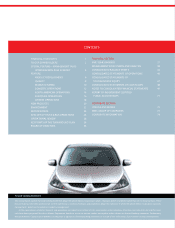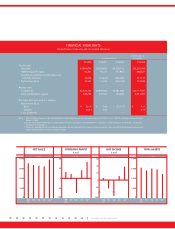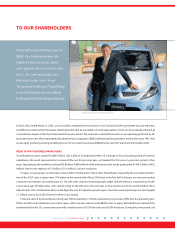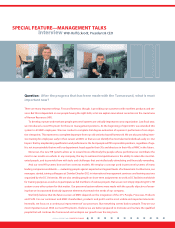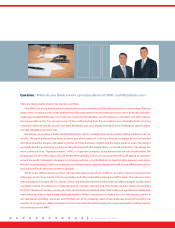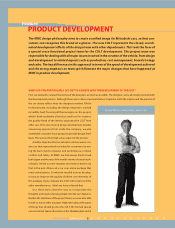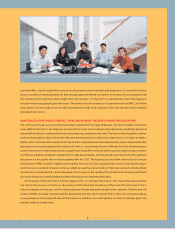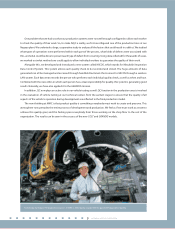Mitsubishi 2003 Annual Report Download - page 12
Download and view the complete annual report
Please find page 12 of the 2003 Mitsubishi annual report below. You can navigate through the pages in the report by either clicking on the pages listed below, or by using the keyword search tool below to find specific information within the annual report.
10
ANNUAL REPORT 2003 POWER TO CHANGE 10
ANNUAL REPORT 2003 POWER TO CHANGE
Koichi Kaku, General Manager of Production
Engineering Control Department
MMC is now working towards the creation of a unified production system for all of its manufac-
turing plants worldwide. Although each of our plants in Japan and elsewhere differs in terms of
location, facilities, personnel and workforce expertise, MMC has now established common pro-
duction processes and Quality-Control Systems (QCS), as well as standardized production set-
ups (together referred to as MiPS, or the Mitsubishi Production System). This approach ensures
to take maximum advantage of the particular qualities of each plant. MMC is proceeding the
extensive sharing of expertise and information between plants by applying the standardized
key performance indices (KPI) for measuring levels of productivity, product quality and cost.
This shift to a globalized production system is expected to yield substantial benefits in terms of
quality improvement and cost minimization. At the same time, the greater line flexibility inher-
ent in the new system will promote increased mutual model production complementarity
between different plants. To accelerate the smooth transition to the new system, global manu-
facturing conferences take place and are attended by representatives of each plant regularly.
WHAT LEVEL OF MANUFACTURING PRODUCTIVITY IS
CURRENTLY BEING ACHIEVED? AND HOW IS THE SHIFT
TO A GLOBALIZED PRODUCTION APPROACH GOING TO
MAKE A POSITIVE IMPACT?
MMC plants, both in Japan and abroad, are achieving
extremely high levels of productivity. The World Markets
Research Center, which is based in the UK, rated our
Mizushima plant in Japan as the world’s leading vehicle
manufacturing plant in terms of productivity. Our flexible-
line approach, which allows a single line to make various
models, is ahead of many other car manufacturers in respect
of flexibility and efficiency that it confers. In Japan, we have
three vehicle manufacturing plants, Mizushima, Okazaki,
and Pajero Manufacturing Co., Ltd. (PMC) and our
powertrain plant in the Kyoto area. Overseas, we have
vehicle manufacturing plants in the United States, the
Netherlands, Australia and Thailand. In addition, we are
affiliated with many automakers around the world. In China,
where we have just started local production of the PAJERO
SPORT at Beijing Jeep Corporation, we have four such part-
nerships. In engines, we have entered a global alliance with
DaimlerChrysler and Hyundai Motor Company, which will
produce at least 1.5 million gasoline engines annually at
plants located in the United States, South Korea and Japan.
In addition, we are building a new plant for smaller gaso-
line engines together with DaimlerChrysler in Germany.
MANUFACTURING
Feature


